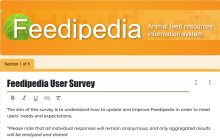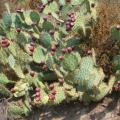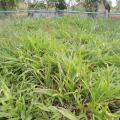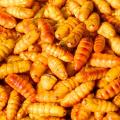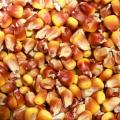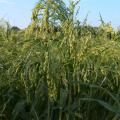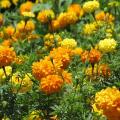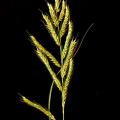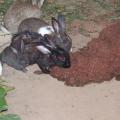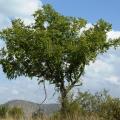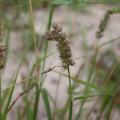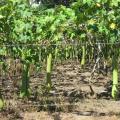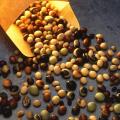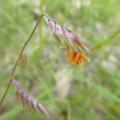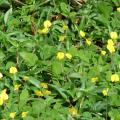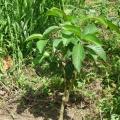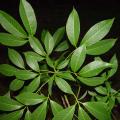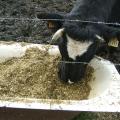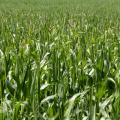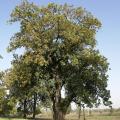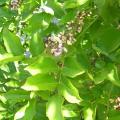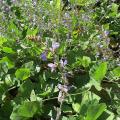Feedipedia news
After 13 years, it is time for the website to be upgraded! Before we start, we need your input.
Explore Feedipedia
|
The prickly pear (Opuntia ficus-indica) is a cactus species widespread in... Read more |
Congo grass (Brachiaria ruziziensis Germ. & Evrard or Urochloa... Read more |
Silkworms are the caterpillars of moth species raised for silk. 90% of the world... Read more |
|
Maize (Zea mays L.) is a major staple food grain throughout the world,... Read more |
The proso millet (Panicum miliaceum L.) is a cereal plant cultivated for its... Read more |
Mexican marigold (Tagetes erecta L.) is an herbaceous plant from the sunflower... Read more |
|
Burgu (Echinochloa stagnina (Retz.) P. Beauv.) is a perennial, or sometimes... Read more |
Brewers grains are the solid residue left after the processing of germinated and dried... Read more |
The buffalo thorn (Ziziphus mucronata Willd.) is a multipurpose tree whose... Read more |
|
The Indian sandbur (Cenchrus biflorus Roxb.) is a valuable fodder plant... Read more |
Luffa (Luffa aegyptiaca Mill.) is a plant from the cucumber family, mainly grown... Read more |
Soybean (Glycine max (L.) Merr.) is the largest oilseed crop, with 276 million t... Read more |
|
Slender grama (Bouteloua repens (Kunth) Scribn.) is a pasture grass from the dry... Read more |
Pinto peanut (Arachis pintoi Krapov. & W.C. Greg.) is a perennial tropical... Read more |
Nacedero (Trichanthera gigantea (Humboldt & Bonpland.) Nees) is a... Read more |
|
The rubber tree (Hevea brasiliensis) is a fast growing, medium to tall tree (25... Read more |
Maize silage (Zea mays L.) is made out of whole ensiled maize plants. It is one... Read more |
Maize (Zea mays L.) green forage, particularly when it contains the stalks,... Read more |
|
Mahua (Madhuca longifolia (L.) J. F. Macbr.) is a multipurpose tropical tree... Read more |
Karanja (Millettia pinnata (L.) Panigrahi) is a fast-growing, multipurpose tree... Read more |
Caeruleum calopo (Calopogonium caeruleum (Benth.) C. Wright) is a climbing... Read more |
Pages
Recent resources
 Opinion paper: Phasing out of the aid provided to the livestock sector during expectedly recurrent emergencies
- Makkar, 2024. animal
Opinion paper: Phasing out of the aid provided to the livestock sector during expectedly recurrent emergencies
- Makkar, 2024. animal
Open access opinion paper that makes a case that the emergency aid do more harm than good to African countries. It is valid for all the fields of agriculture but has direct consequence for animal agriculture. The context here is the aid provided during emergencies that are foreseeable recurrent.
The role of livestock in food security, poverty reduction and wealth creation in West Africa
- Molina-Flores et al., 2020. Food and Agriculture Organization of the United Nations Accra, 2020
Livestock is key to 377 million people in West Africa and in some countries, up to 60% of the population is involved in livestock production. The demand for animal products is increasing with population growth, urbanization, growing middle class, and due to shifting consumer preferences towards animal products. To meet this growing demand, countries in West Africa must engage in accelerated sustainable livestock production undertaking. Livestock development is key to eradicate hunger and poverty. This book attempts to provide up-to-date, and reliable information on the potentials, opportunities, and challenges of the livestock subsector in West Africa.
Pulses and their by-products as animal feed
- Sherasia et al., 2017. In: Calles, T.; Makkar, H. P. S. (Eds), FAO, Food and Agriculture Organization of the United Nations, Rome, Italy
This document provides a state-of-the-art review of the recent research (published and unpublished) on the use of pulses and their by-products as animal feed. It aims at raising awareness on the use of pulses and their by-products. It highlights the nutritional role of pulses and pulse by-products as animal feed and is a contribution to the legacy of the 2016 International Year of Pulses. This document will further enhance the use of these feed resources in other continents, besides Asia, where many pulse by-products are simply dumped. It is also expected that the synthesis presented contributes to make the use of pulses and their by-products as animal feed more efficient. This document will be useful for extension workers, researchers, feed industry, policy-makers and donors alike.









